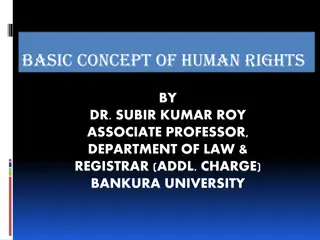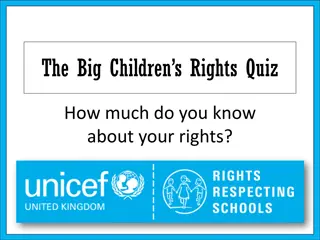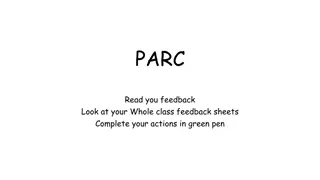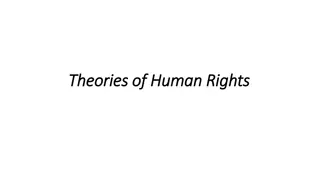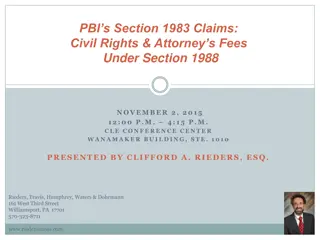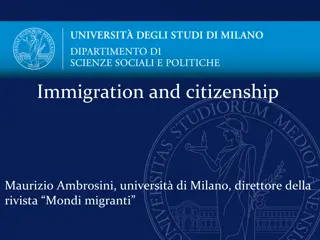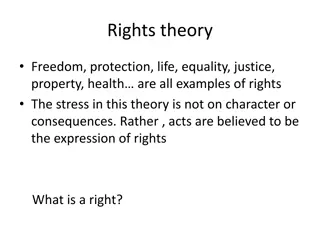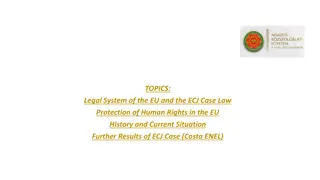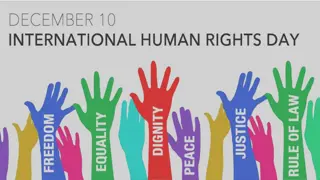Rights of Detainees: Understanding the Case of Hamdi v. Rumsfeld
The case of Hamdi v. Rumsfeld highlighted the importance of upholding the rights of detainees, even in times of war. Yaser Hamdi, an American citizen, was detained as an enemy combatant, sparking a legal battle over due process rights. The Supreme Court ruled that while the government had the power to detain Hamdi under Congressional authorization, he was entitled to due process and access to a neutral decision maker. This case underscores the significance of balancing national security concerns with individual liberties during times of conflict.
Uploaded on Sep 17, 2024 | 2 Views
Download Presentation

Please find below an Image/Link to download the presentation.
The content on the website is provided AS IS for your information and personal use only. It may not be sold, licensed, or shared on other websites without obtaining consent from the author.If you encounter any issues during the download, it is possible that the publisher has removed the file from their server.
You are allowed to download the files provided on this website for personal or commercial use, subject to the condition that they are used lawfully. All files are the property of their respective owners.
The content on the website is provided AS IS for your information and personal use only. It may not be sold, licensed, or shared on other websites without obtaining consent from the author.
E N D
Presentation Transcript
It is easy sometimes to think that the rights of prisoners have little to do with us that they have somehow exchanged their rights for a life of crime. This is wrong on two counts. Firstly, everyone has the same rights and they can never be taken away, no matter where you are, or what you may have done. Secondly, just because you are in prison, it does not mean you are guilty of a crime if you were lucky enough to have a trial, it may not have been a fair one.
Hamdi v Rumsfield (2004) landmark case on the rights of the accused. Supreme Court ruled on a case involving enemy combatants.
Facts The Afghan security team captured Yaser Hamdi and turned him over to the American military in Afghanistan, 2001. Hamdi claimed to be a relief worker who had been mistakenly captured in a round-up. The military, however, said he had been captured while fighting for the Taliban against the United States. Once Hamdi was taken to the United States, officials discovered that Hamdi was an American citizen. He was kept in prison without access to a lawyer or the courts. father filed a habeas petition in court and claimed the government was denying Hamdi his Fifth Amendment right to due process. According to the Government he was an enemy combatant and hence not be made accessible to any lawyer. Even the courts have no jurisdiction over such detainees. No application of Geneva Conventions in such cases.
ISSUES Can the executive branch unilaterally declare people to be enemy combatants and hold them indefinitely? Did Hamdi have the right to have his case heard by a neutral decision maker?
Judgment The executive branch alone does not have the power to designate people as enemy combatants and then use that designation as a reason to hold them indefinitely without due process. However, a plurality of justices agreed that Congress had authorized Hamdi s detention when it approved the use of force in Afghanistan. Therefore, the government had the power to detain him as long as the war continued. enemy combatants are also the citizens and they do have rights of due process. The Constitution s separation of powers require that courts review presidential decisions; Hamdi had the right to bring his case before a neutral decision maker.
Rational State of war is not a blank check when it comes to the right of citizens. When individual liberties are at stake, the Constitution plays a role, Absent suspension of the writ of habeas, a citizen detained as an enemy combatant is entitled to this process.
Dissent Decision below should be reversed because a citizen waging war against his own country should be tried for treason or some other crime in federal court. If civil rights are to be curtailed during wartime, it must be done openly and democratically, as the Constitution requires, rather than by silent erosion through an opinion of this Court.
I would like to show a video clip of about 30-45 seconds, a little about it would be explained in slide 8, an extract of which is in slide 9 for now. Further are the pictures depicting the lives of the prisoners which will be slide shown on the loop of 5 seconds each. More pictures will be added. This will be the background of my analysis, which I will speak. My analysis is from slide 14.
After the completion of the video clip Some three thousand of the prisoners were forced into sealed containers and loaded onto trucks for transport to Sheberghan prison. When the prisoners began shouting for air, U.S.-allied Afghan soldiers fired directly into the truck, killing many of them. The rest suffered through an appalling road trip lasting up to four days, so thirsty they clawed at the skin of their fellow prisoners as they licked perspiration and even drank blood from open wounds. Witnesses say that when the trucks arrived and soldiers opened the containers, most of the people inside were dead. They also say US Special Forces re-directed the containers carrying the living and dead into the desert and stood by as survivors were shot and buried. Now, up to three thousand bodies lie buried in a mass grave. Outraged human rights groups and lawyers are calling for an investigation but the U.N. special envoy to Afghanistan refuses any U.N.-backed investigation until the Afghan government can protect witnesses. Two of the witnesses in the film have already been killed.
*My analysis* These pictures are a very common sight to each of us now, showing the brutality of one over another. Critical thinking over the circumstances under which these pictures are being taken. The lynching pictures will be preserved for the future generation to see the absence of humanity by the world s strongest nations. These pictures are taken in the prison of Abu Gharaib, a detention center in Iraq ruled by the U.S. Army. Ironically, the U.S government has shown its grief about this issue. Former President Bush has avoided use of words like torture and genocide in spite of slaughtering 800,000 people. Many liberal democracies betray a noticeable discomfort when it comes to public scrutiny of immigration detention, neglecting to release comprehensive statistics about it, cloaking detention practices in misleading names and phrases, and carefully choosing which activities they define as deprivation of liberty.
War has now become an occupation, an inevitable tapestry of actions. My main concern is not related to who has done the war, the focus in the War in itself. The policies, the systematic acts done by the individuals, the mind set with which we look at the people, the hatred filled within each of us and the way it s outflowing. Its unfortunate to measure the increasing acceptance of brutality in our life, starting from a video game to the gun in hands. Its sad to see the growth in delight which comes with the acts of violence.






